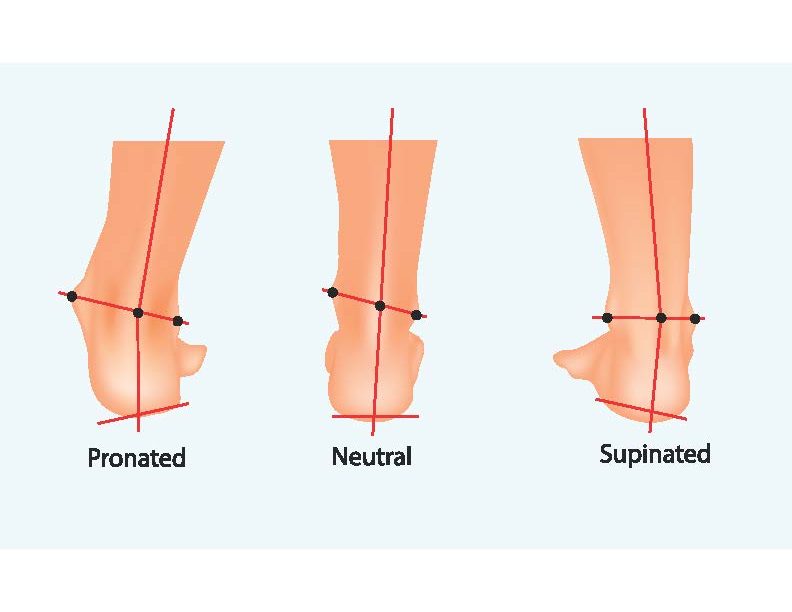Movement Starts at the Ground
Your feet are the very foundation of your body’s mobility. Without proper foot function, the body’s balance and movement patterns are negatively affected. This can have a profound influence on your overall body mechanics and performance.

Your feet have many roles. They support your weight and balance you, allowing you to stand upright; they propel you forward and stop you from moving; they absorb ground forces; and they help you adapt to uneven terrain as you move. To perform these roles, each healthy foot is both a rigid lever and a mobile structure. Or to use the words from TPI and others, the foot must be both “mobile and then stable”. The hundreds of bones, ligaments, joints, muscles and tendons that comprise each foot must all work together for smooth and efficient movement.
Whether it’s a golfer swinging a driver, a sprinter pushing from a starting block, or a diver jumping from a 10-meter platform, you can see how a person’s feet play a role in the dynamics of the body’s movement. Athletes spend considerable effort and time ensuring their body is properly conditioned for the movement they are about to make. Improper foot function can throw off the entire performance and could even cause injury. This demonstrates the importance of ground mechanics in relation to overall function and performance.

Biomechanics and Foot Function – The Basics
The biomechanics of the foot and ankle are vital to the function of the lower leg. The foot and ankle framework and movements impact how the lower leg manages the forces in its role of weight bearing and movement. The structural elements of the foot, the bones and ligaments, combine with the dynamic elements, the muscles and nerves, to make this movement possible. That’s not ignoring the incredible foot to brain connection that makes this all happen.
Pronation, the inward roll of the foot, and supination, the outward roll of the foot, are the defining motions of both the foot and ankle. Pronation leads to a state of mobility while supination leads to a state of stability. The Transition Sequence® is the continuous switch between these two motions.
It’s at this point that the foot transitions back and forth from being a mobile structure that adapts to the ground and the stability or rigid lever your body needs to maximize the forces to propel you forward.

Stability, mobility, and the Transition Sequence® are best managed when both the structural and dynamic components of the foot are working together in synergy.
Demonstrating Efficient Coordination Within the Foot
The effective dynamics or coordination of the foot can be easily demonstrated by examining the stance phase of gait – the time when your foot is on the ground, beginning with the heel strike. As your heel touches the ground, your foot should be in a slightly supinated position. The foot and ankle then immediately pronate as they absorb the body’s weight. At this point, the foot is mobile and it absorbs the ground forces. Your foot then positions the forefoot for the next phase of gait, the mid-stance.
At mid-stance, your foot begins to supinate and continues this motion through the “toe off” pushing motion. Here your foot changes from being a mobile structure back to a rigid lever that can then propel your body forward as you swing your other leg forward to repeat the motion.
It is this efficiency, the Transition Sequence® of supination/pronation/supination, that is the key to proper biomechanics of the foot. It is critically important that the foot has the mobility and stability necessary to achieve optimal positioning throughout the entire gait cycle.
Rehabilitation and Performance Improvement Programs – Starting at the Foot
The majority of rehabilitation and performance improvement programs focus on the dynamic elements of the body overall. It is important to dedicate time and effort on motor control and proprioception, which form the basis of any conditioning or rehabilitation protocol. These programs are solid and successfully increase strength and flexibility of the foot and lower leg. That being said, it is also important to realize that the foot requires special focus on its structural elements to improve the leg’s efficiency, namely the arthrokinematics.
Efficient foot and ankle biomechanics are the result of a foundation of solid joint surface approximation, bone surfaces coming together like puzzle pieces (arthrokinematics). This foundation is the base of the ALINE suspension design. Not only does this healthy alignment of your feet, ankles, and knees promote injury-free and productive movement, it enhances overall body performance for work, for play, and for a better quality of life.

Derek Carroll, President and Co-Founder ALINE – Guest Contributor




